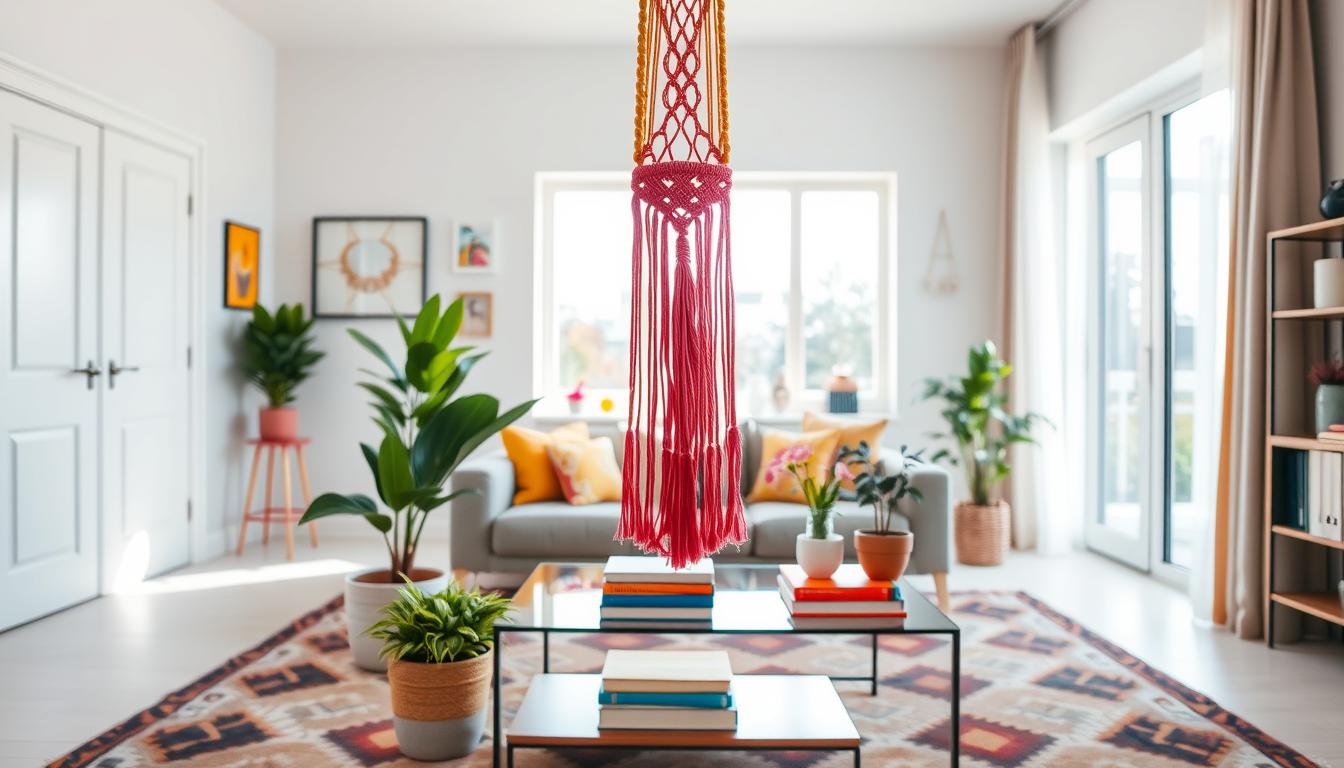Ever walked into a room and instantly felt a boost of happiness? That’s the magic of blending science and design. A fresh trend combines color psychology and personal creativity to craft spaces that spark joy. Whether you’re a beginner or a pro, simple projects can turn any space into a mood-lifting sanctuary.
From bold accent walls to upcycled furniture, small changes make a big impact. Designers like Rachel Smith and Reena Sotropa showcase how vibrant hues and unique touches create energy. The best part? You don’t need a big budget—just a little inspiration.
This approach isn’t just about looks. It’s about crafting an environment that reflects your personality and lifts your spirits. Ready to refresh your space? Let’s dive into easy, uplifting ideas.
Key Takeaways
- Combining color psychology and design creates joyful spaces.
- Simple projects work for all skill levels and budgets.
- Bold walls and upcycled items add instant energy.
- Personal touches make your home uniquely uplifting.
- Designers use vibrant hues to inspire happiness.
What Is Dopamine Decor?
Bright hues and playful patterns can transform any dull corner into a joyful retreat. This trend blends psychology and design to create rooms that spark positivity. It’s not just about aesthetics—it’s about crafting a space that makes you smile the moment you walk in.
Why Colors and Patterns Boost Happiness
Warm tones like coral and yellow energize, while cool blues soothe. Research by Arterberry Cooke shows geometric shapes stimulate neural pathways 18% more than plain walls. The 60-30-10 rule helps balance bold colors: 60% dominant, 30% secondary, and 10% accent.
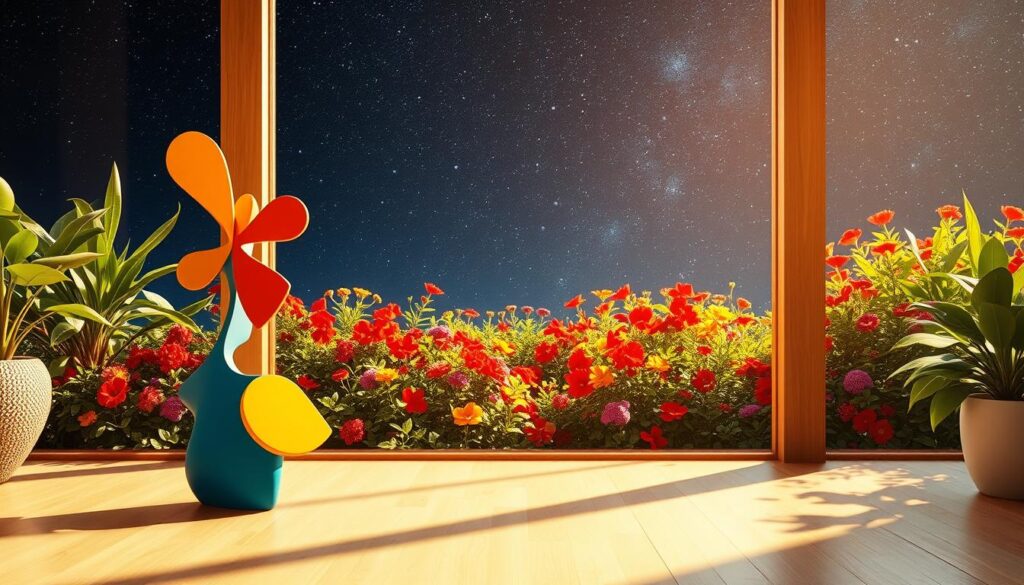
Designer Reena Sotropa found coral-and-white walls lifted moods by 37%. Even NIH studies confirm patterned environments reduce stress by 22%. Unlike minimalist trends, this style embraces personality—like Jenny Johnston’s all-red laundry room that defies convention.
The Science Behind Joyful Spaces
Saturated hues trigger serotonin production, linked to calm and happiness. Barrett Cooke’s work reveals organic shapes (like florals) feel more inviting than sharp angles. The key? Layer textures and tones to create depth without clutter.
Tip: Start with one bold piece—a painted chair or patterned rug—then build around it. Your brain rewards novelty, so refresh small details often to keep the joy alive.
Start Small with Dopamine Decor DIY
Small changes can bring big joy to your home—no major renovation needed. Focus on quick wins like vibrant pillows or a single bold wall. These updates cost little but pack a punch.
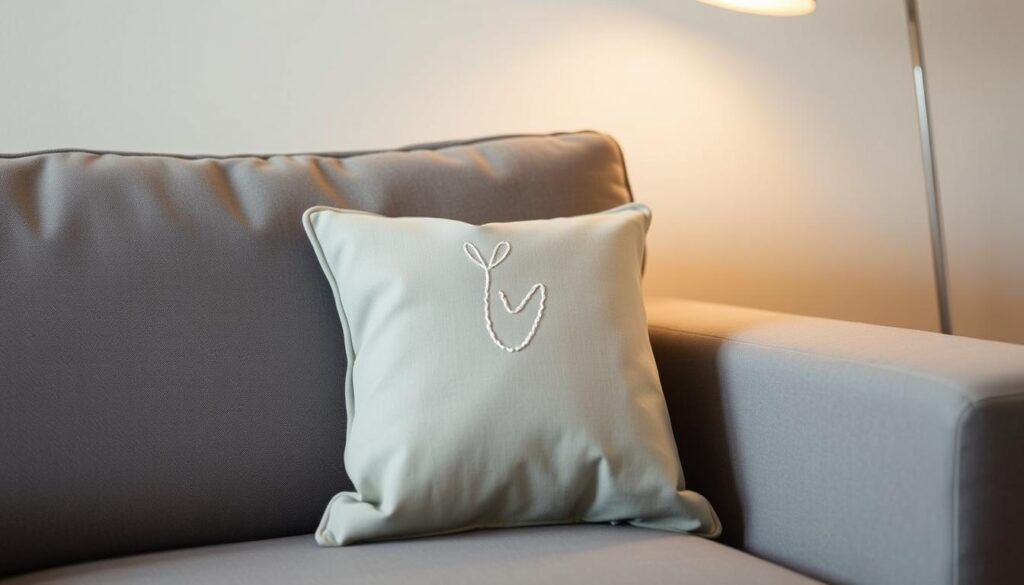
No-Sew Pillow Covers and Thrifted Art
RJ Living’s Bree Steele suggests starting with $15 squish lamps or fabric-glue pillow covers. Here’s how:
- Use thrifted linens and pom-poms for texture.
- Paint abstract art with acrylics on canvas scraps.
- Peel-and-stick wallpaper adds flair to frames.
Accent Walls in Under 2 Hours
Phil Crozier’s removable wallpaper tutorial makes walls pop. Renters love Sarah Baker’s checkerboard hack:
- Measure and mark with painter’s tape.
- Paint alternating squares in contrasting hues.
- Seal edges with a small brush.
| Project | Cost | Time | Skill Level |
|---|---|---|---|
| Pom-pom pillows | $10–$20 | 30 mins | Beginner |
| Checkerboard wall | $25–$50 | 2 hours | Intermediate |
Safety tip: Open windows for paint fumes and secure ladders on flat surfaces. Happy crafting!
Experiment with Bold Patterns
Bold designs aren’t just eye-catching; they rewrite the rules of visual harmony. Sasha Malchi’s 2024 striped ceiling and wallpaper combo proves that fearless styles create unforgettable spaces. The secret? Arterberry Cooke’s “pattern math”: balance large, medium, and small prints for cohesion.
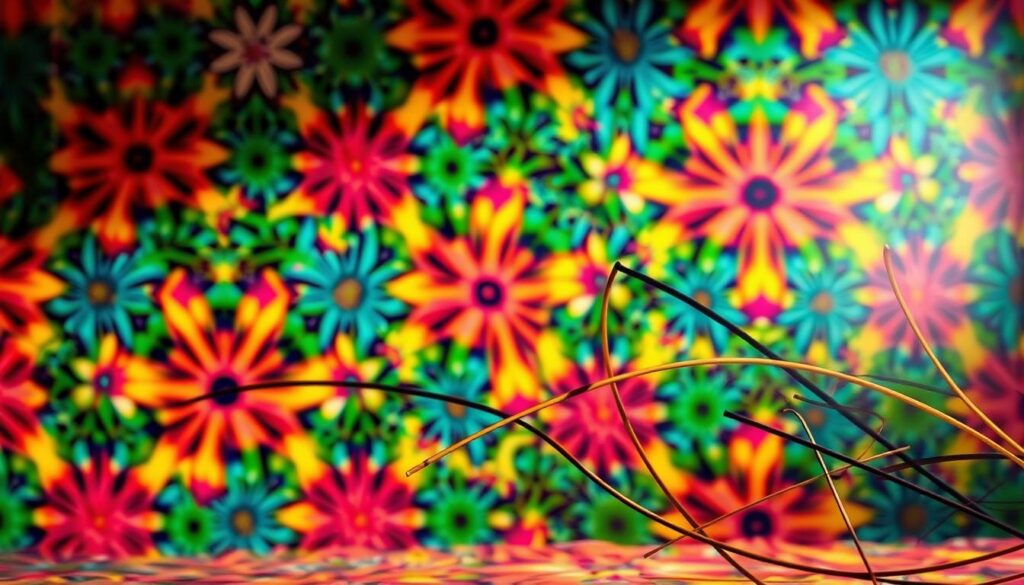
Mixing Wallpaper and Paint
Pair damask with polka dots by matching their color values—use a Benjamin Moore fan deck to test shades. Heavy-weight wallpapers need adhesive pastes like Roman’s PRO-543 for longevity.
“Layering patterns is like a conversation—each element should complement, not compete,”
advises Malchi.
Unexpected Pairings That Work
Try these designer-approved combos:
- Florals + geometric stripes (scale: large florals, thin stripes)
- Animal print + toile (keep colors monochromatic)
- Plaid + abstract art (anchor with a neutral fabric)
Warning: Small rooms need breathing room—limit to two patterns or use removable decals for flexibility.
Break the Rules of Design
Design rules are meant to be bent—sometimes broken—to reflect your personality. Take Jenny Johnston’s ruby-red laundry room, featured in House Beautiful. It defies the “neutral laundry space” norm, proving bold choices create unforgettable rooms.

How to Embrace Your Unique Style
Forget “matchy-matchy.” Clashing finishes—like glossy cabinets with matte walls—add depth. Farrow & Ball reports 82% of customers now mix custom colors, craving uniqueness. Try these rule-breakers:
- Metallic spray paints: Transform thrifted frames into statement pieces.
- Texture rollers: Add geometric patterns to plain walls in minutes.
- Peel-and-stick tiles: Temporary yet bold backsplashes for renters.
Example: A Monochromatic Red Room
Johnston’s laundry room uses varying red tones (cherry walls, crimson shelves) to avoid monotony. Here’s how an all-teal bedroom achieved similar impact:
| Element | Before | After |
|---|---|---|
| Walls | Beige | Teal (Sherwin-Williams “Ocean Abyss”) |
| Textiles | Neutral linens | Patterned velvet pillows |
Safety tip: Test intense color schemes in small areas first. Use low-VOC paints and ventilate spaces well.
“Chromotherapy studies show saturated hues stimulate neural pathways linked to joy,”
Balance Bold and Neutral Elements
Striking the right mix between bold and neutral creates spaces that feel both lively and relaxing. RJ Living’s 70-20-10 guideline suggests 70% neutrals, 20% bold hues, and 10% metallic accents. This ratio keeps rooms energizing yet grounded.
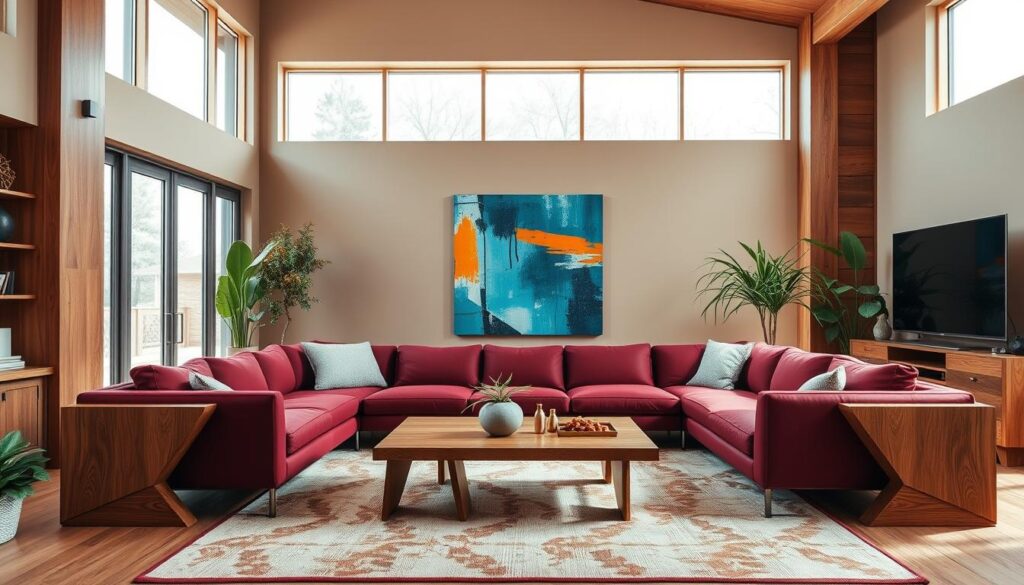
Choosing a Focal Piece
Every room needs a star. Designer Reena Sotropa uses walnut shelving to balance neon artwork, proving natural wood enhances bold statements. Follow these steps:
- Place your focal piece using the golden ratio (roughly 1:1.618 from room edges).
- Live-edge tables with glossy lacquer add organic contrast.
- Frame vibrant art with matte black for drama.
Natural Materials to Ground the Space
Textures like jute or sisal rugs soften bold walls. Compare their perks:
| Material | Best For | Maintenance |
|---|---|---|
| Jute | High-traffic areas | Spot clean only |
| Sisal | Formal spaces | Vacuum weekly |
*Tip*: Add crotons or nerve plants for pops of color. For a rustic touch, try limewash over brick—it’s reversible and rent-friendly.
Go Room by Room
Not every room in your home needs the same energy—some spaces thrive with bold colors, while others need calm. The Crafted Life’s survey reveals 68% prefer vibrant kitchens over bedrooms. Sherwin-Williams’ 2024 report confirms: room function dictates color choices.
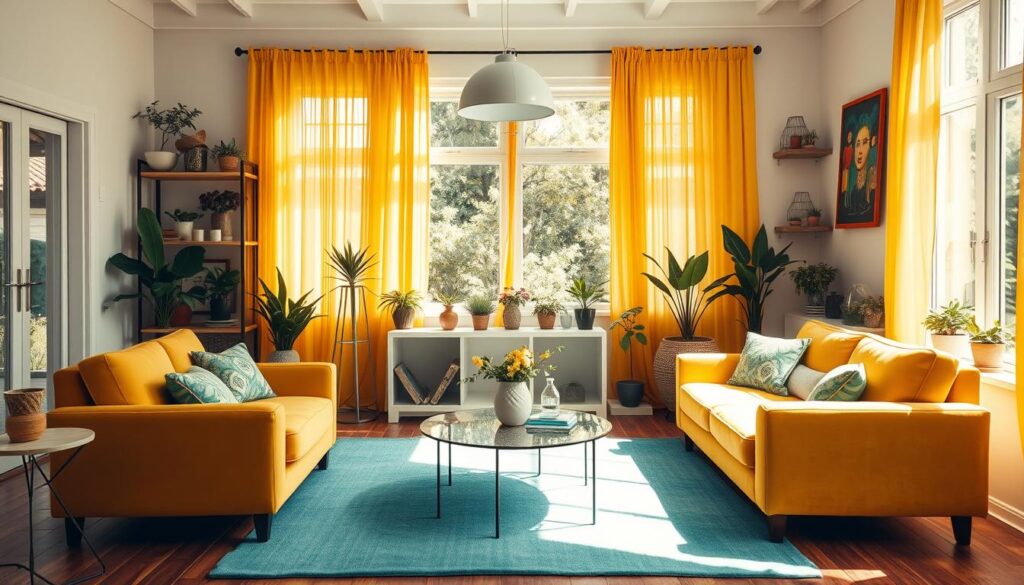
Best Spaces for High-Impact Color
Ranked by DIY potential:
- Laundry rooms: Small, often overlooked—perfect for ruby reds or citrus tones.
- Home offices: Energize with teal or mustard to boost creativity.
- Nurseries: Soft pastels (LRV >60) maintain tranquility.
When to Pull Back
Sleep spaces need light reflectance values (LRV) under 50 for melatonin-friendly darkness. For circadian harmony:
| Room | Ideal Finish | Sound-Absorbing Material |
|---|---|---|
| Bedroom | Matte (low glare) | Acoustic panels |
| Playroom | Semi-gloss (easy clean) | Thick rugs |
“Color intensity should match room activity—high-energy hues in workspaces, muted tones where you unwind.”
Tip: Test colors at different times of day. North-facing rooms need warmer tones to combat cool light.
Pick Your Happy Color Palette
Color choices shape emotions—pick hues that spark joy daily. Pantone’s 2024 Color of the Year, “Peach Fuzz,” blends warmth with modernity. Benjamin Moore’s research shows earthy tones like terracotta are rising, while neon orange adds bold energy.
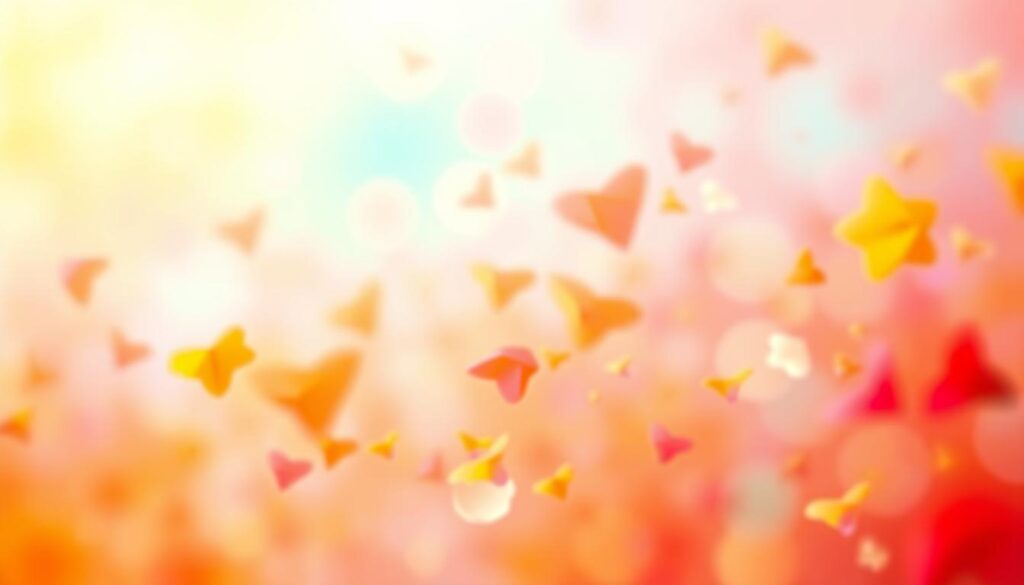
Saturated Neutrals vs. Bright Hues
Terracotta grounds a room, while neon orange electrifies. Test swatches in different lights—morning sun changes colors dramatically. For balance, pair one vibrant shade with two neutrals.
Try these styles from top designers:
- Moss walls: Live greenery adds texture (Jungalow kits simplify installation).
- Vacation photos: Use apps like Coolors to extract palette ideas.
- CB2’s biophilic line: Woven rugs mimic natural patterns.
Inspiration from Nature
Forest greens and ocean blues create calm. A rainbow of wildflower tones energizes. For authenticity, sample nature-inspired paints:
| Paint Type | Best For | Saturation Level |
|---|---|---|
| Oil-based | Rich, deep hues | High |
| Water-based | Eco-friendly blends | Medium |
“Peach Fuzz bridges warmth and innovation—ideal for spaces craving soft energy.”
Prioritize Function with Fun Decor
Who says practical can’t be playful? Your home can be both functional and full of personality. The key is choosing pieces that serve a purpose while sparking joy—like a storage ottoman that doubles as a coffee table or a desk-bed combo for small spaces.
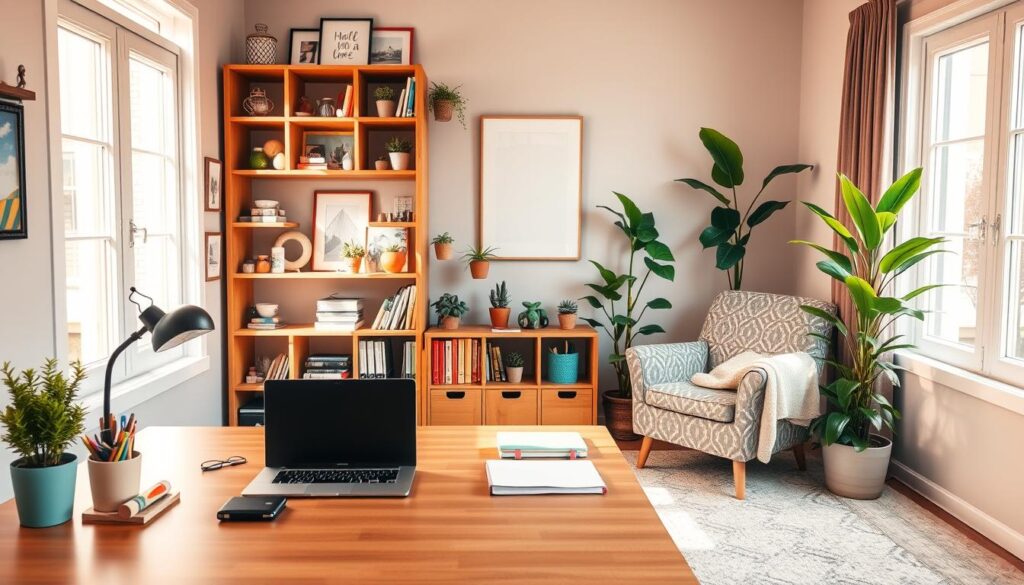
Quirky Yet Practical Furniture
Multi-functional design solves space challenges without sacrificing style. Try these ideas:
- Storage ottomans: Hide blankets or toys inside vibrant, textured fabric.
- Desk-beds: Fold-down wall units save space in home offices or studios.
- Acrylic frames: Lightweight and durable for displaying art or photos.
Comfort Meets Creativity
Even the most stylish furniture should feel good. IKEA hacker communities swear by modular solutions like ergonomic cushions for statement chairs. For playrooms, opt for rounded edges and non-toxic materials.
“Versatile design lets you adapt your space as needs change—without losing the fun factor.”
Pro tip: Use curtain rods to hang lightweight art or woven baskets—adding utility and visual interest.
Create a Smile-Inducing Gallery Wall
A gallery wall isn’t just decor—it’s a mood-boosting masterpiece waiting to happen. Lisa Gilmore’s 3D mapping technique proves that thoughtful layouts can turn any wall into a focal point. Whether you love bold abstracts or vintage prints, your art should reflect what makes you happy.
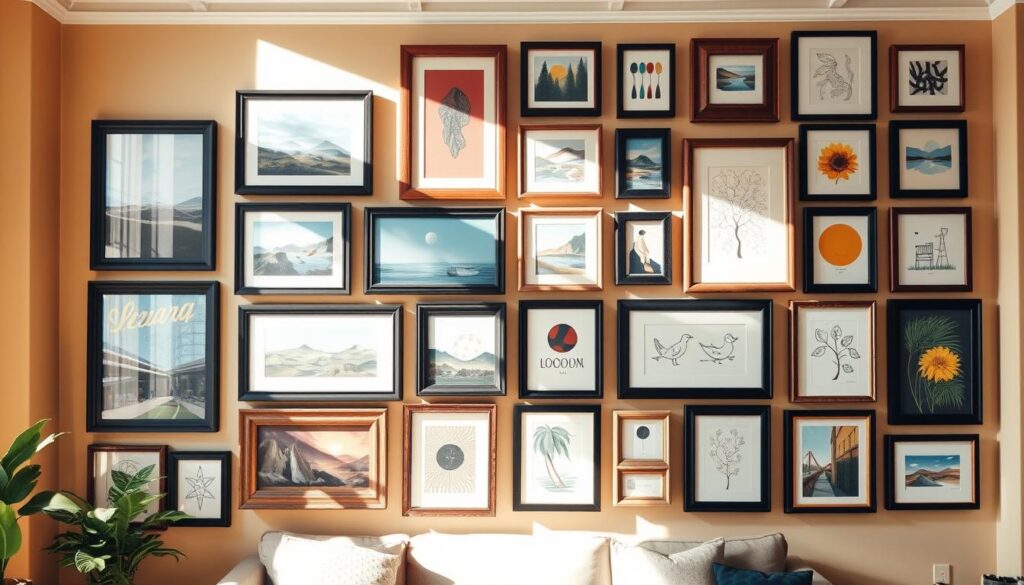
Selecting Art That Sparks Joy
Minted’s survey found 73% of people feel happier surrounded by personalized art. Follow these tips to curate your collection:
- Mix mediums: Combine paintings, photos, and textiles for depth.
- UV-filtering glass: Protect prints from sunlight without sacrificing clarity.
- Affordable sources: Scout Society6 or local college art shows for unique pieces.
Arrangement Tips for Maximum Impact
Salon-style clusters feel eclectic, while grid layouts offer crisp order. Try these pro tricks:
- Use a laser level to align frames perfectly.
- Upcycle thrifted frames with Rub ’n Buff for metallic flair.
- Secure heavy pieces with earthquake-proof hooks like OOK’s 50-lb variants.
“A gallery wall should evolve with you—swap pieces seasonally to keep the joy fresh.”
| Layout Style | Best For | Tools Needed |
|---|---|---|
| Grid | Modern spaces | Measuring tape, level |
| Salon | Eclectic rooms | Paper templates, painter’s tape |
Pro tip: Lay out your arrangement on the floor first. Snap a photo to reference while hanging.
Dopamine Decor DIY: Bold Tile Designs
Tiles offer endless possibilities to energize any space with personality. Whether you’re tackling a full bathroom renovation or just updating a backsplash, creative designs can make a dramatic impact. The best part? You don’t need professional skills or a big budget to achieve stunning results.
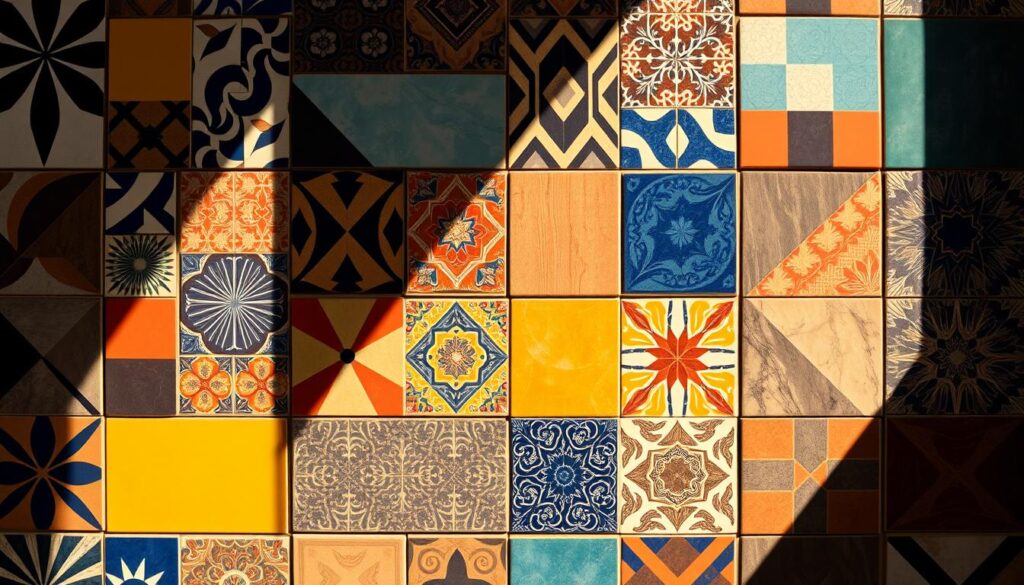
Color-Blocking Techniques That Pop
Sarah Baker’s viral $200 bathroom makeover proves how tile stickers can create high-end looks. Her secret? Strategic color-blocking with contrasting grout. Try these pro techniques:
- Use mortar dye to customize grout colors—dark shades make patterns stand out
- Create geometric shapes by alternating glossy and matte finishes
- Frame focal points like showers with border tiles in complementary hues
Smart Solutions for Every Budget
The Tile Council of North America recommends checking non-slip ratings (R9-R13) for wet areas. Consider these affordable options:
| Material | Best For | DIY Difficulty |
|---|---|---|
| Peel-and-stick mosaics | Rental kitchens | Beginner |
| Ceramic subway tiles | Backsplashes | Intermediate |
| Porcelain planks | High-traffic floors | Advanced |
Fireclay Tile offers custom color matching for unique projects. Their eco-friendly glazes come in 200+ shades. For beginners, practice cuts on spare pieces first.
“Always wear safety goggles when using wet saws, and keep fingers clear of the blade path.”
Pro tip: Use painter’s tape to mark complex patterns before applying adhesive. This prevents mistakes and saves time.
Mix and Match Unrelated Patterns
Why settle for one pattern when layered combinations tell a richer story? Bold contrasts—like stripes with florals—create depth and energy. Kate Anlyan’s 3:5:8 scaling formula ensures harmony: small prints cover 30% of the space, medium 50%, and large 20%.
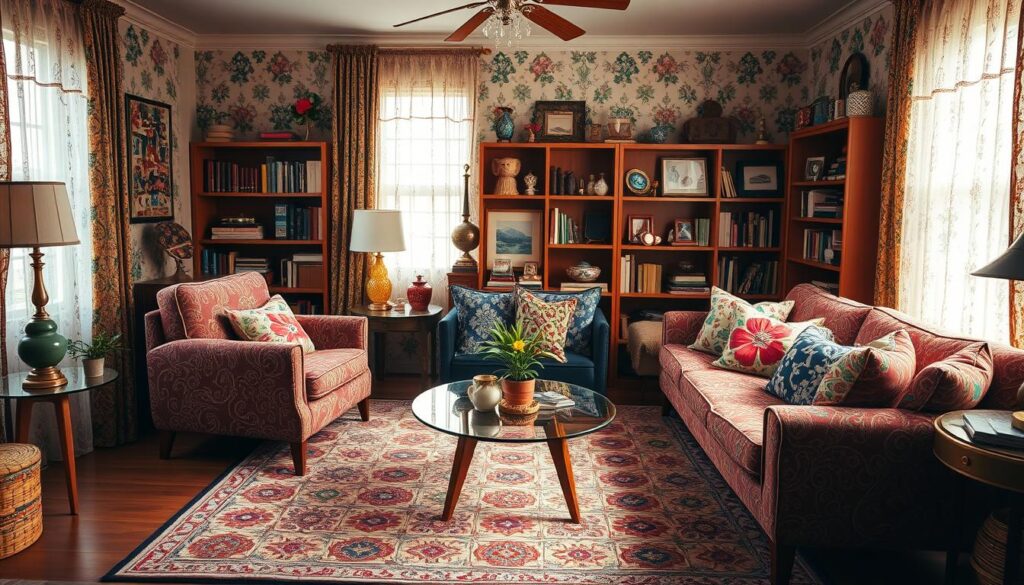
Stripes, Checks, and Florals Together
Clashing patterns work when colors repeat. Try these House Beautiful-approved rules:
- Anchor busy prints with a solid fabric (e.g., neutral sofa under floral pillows).
- Use Spoonflower’s digital tool to preview blends before committing.
- Balance scales—pair delicate polka dots with wide chevrons.
Scaling Patterns for Harmony
Texture swaps fix “too busy” spaces. Swap a bold print for a tactile weave or boho wall hanging. Compare weights for curtains vs. upholstery:
| Application | Ideal Pattern Weight | Example |
|---|---|---|
| Curtains | Light-medium | Watercolor botanicals |
| Upholstery | Medium-heavy | Geometric jacquard |
“Pattern mixing is like jazz—structured improvisation creates magic.”
Pro tip: Canva’s mood board templates help visualize clashes. Start small—a patterned throw or accent chair—then expand.
Upcycle Furniture with Color
Breathing new life into old furniture is easier than you think—with just a splash of color and creativity. Whether it’s a thrifted side table or a family heirloom, simple updates can transform any piece into a statement. Best of all, you don’t need expensive materials or advanced skills.
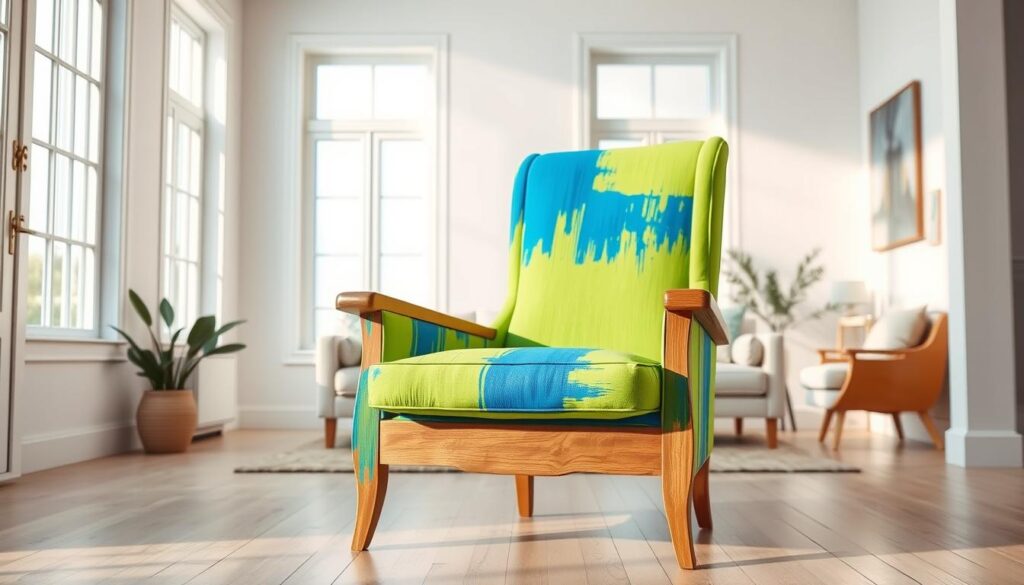
Painting Old Pieces for New Life
Annie Sloan’s chalk paint calculator helps estimate coverage, but milk paint offers a vintage finish. Key differences:
- Milk paint: Eco-friendly, matte texture (ideal for rustic looks)
- Latex: Durable, wider color range (use primer for adhesion)
For beginners, an orbital sander ($35) and tack cloth ($5) prep surfaces smoothly. Vintage flips can yield 200% profits—check local mall booths for undervalued gems.
Reupholstering Chairs and Headboards
JOANN Fabrics’ remnant sales are perfect for small projects. Electric staplers simplify tufting:
- Remove old fabric, keeping padding intact.
- Stretch new material tightly, stapling every 2 inches.
- Add buttons for tufted depth (pre-made kits save time).
| Tool | Cost | Use Case |
|---|---|---|
| Staple gun | $22 | Fabric securing |
| Upholstery needles | $8/set | Button tufting |
“Always test paint and fabric in natural light—colors shift dramatically under bulbs.”
Safety first: Wear gloves and masks when sanding lead-based paint. Opt for low-VOC formulas in well-ventilated spaces. Happy upcycling!
Choose a Single Focal Point
Every great room needs a star—one element that draws the eye and sets the tone. RISD’s study shows well-placed focal points improve perceived design quality by 41%. Whether it’s a vibrant ceiling or a sculptural sofa, this anchor piece creates visual harmony.
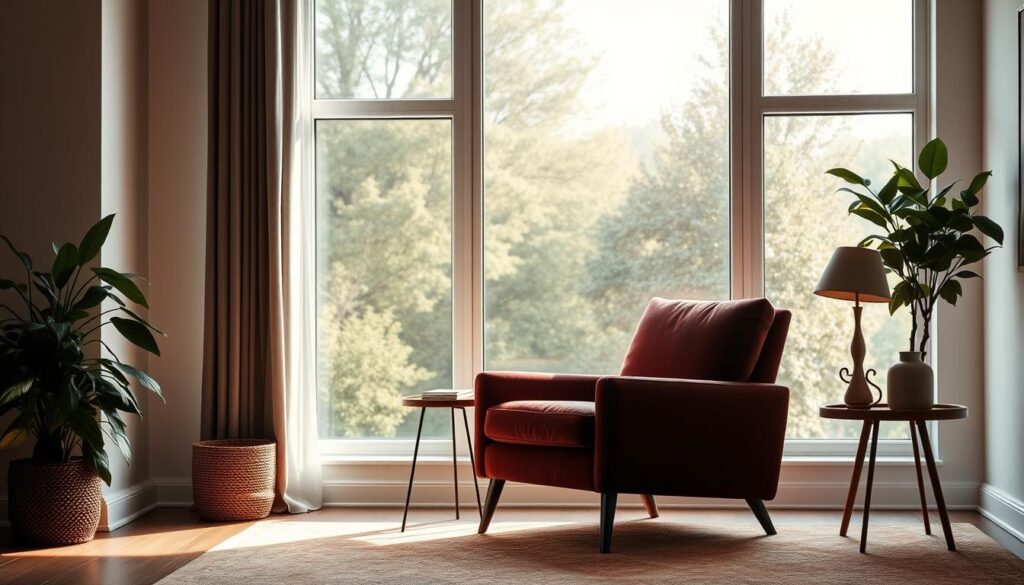
Bold Ceilings or Statement Sofas
Greg Riegler’s photo analysis reveals ceilings are the most underused focal space. Try these eye-catching ideas:
- Paint overhead beams in contrasting colors
- Install peel-and-stick medallions above dining tables
- Use matte finishes for modern looks, glossy for drama
For furniture lovers, ASID recommends keeping statement pieces to 1/5 of the wall area. A velvet sectional or hand-carved bench works perfectly.
Avoiding Visual Chaos
Balance is key. Follow these lighting hierarchy techniques:
- Use AR apps to measure sightlines from entry points
- Layer ambient, task, and accent lighting
- Keep secondary elements 30% smaller than the focal point
| Element | Recommended Scale | Finish Type |
|---|---|---|
| Ceiling feature | 60-80% of ceiling | Matte or metallic |
| Statement sofa | No wider than 2 doorways | Textured fabric |
“Focal points should feel intentional, not accidental—like a stage spotlight on your design’s lead actor.”
Pro tip: In small studios, fold-down desks or Murphy beds can serve dual purposes as functional focal points.
Blend Design Styles Fearlessly
Mixing design eras creates spaces with unexpected charm and personality. The Metropolitan Museum’s conservation team proves that contrasting styles can coexist when balanced properly. Forget rigid rules—your home should reflect your eclectic tastes.

Traditional Meets Maximalist
Victorian claw-foot tables look fresh paired with Space Age acrylic chairs. Bridge elements like clean-lined moldings help blend periods seamlessly. Rejuvenation’s authenticity ratings guide choices for era-specific light fixtures.
- Use gilded frames with modern abstract art for contrast
- Pair tufted Chesterfields with geometric printed pillows
- Layer Persian rugs under glass-top tables
Lighting Across the Decades
Edison bulbs offer warm glow, while LED filaments provide energy efficiency. For vintage fixtures, try this diy cord cover solution:
- Measure exposed wires and cut fabric tubing to length
- Secure with adhesive-backed cable clips every 12 inches
- Tuck excess cord into woven baskets
| Bulb Type | Wattage Equivalent | Best For |
|---|---|---|
| Edison | 40W | Mood lighting |
| LED filament | 60W | Task areas |
“Reproduction pieces must credit original designers—copyright protects creative legacy.”
Mix matte black sconces with brass chandeliers for curated contrast. The key? Let each piece shine while creating harmony through scale.
Layer Textures for Depth
Texture is the silent hero of great design—adding dimension without saying a word. Mohawk Group’s study shows layered surfaces make rooms feel 40% more inviting. From nubby wallpapers to plush rugs, tactile elements create visual interest that flat colors can’t match.
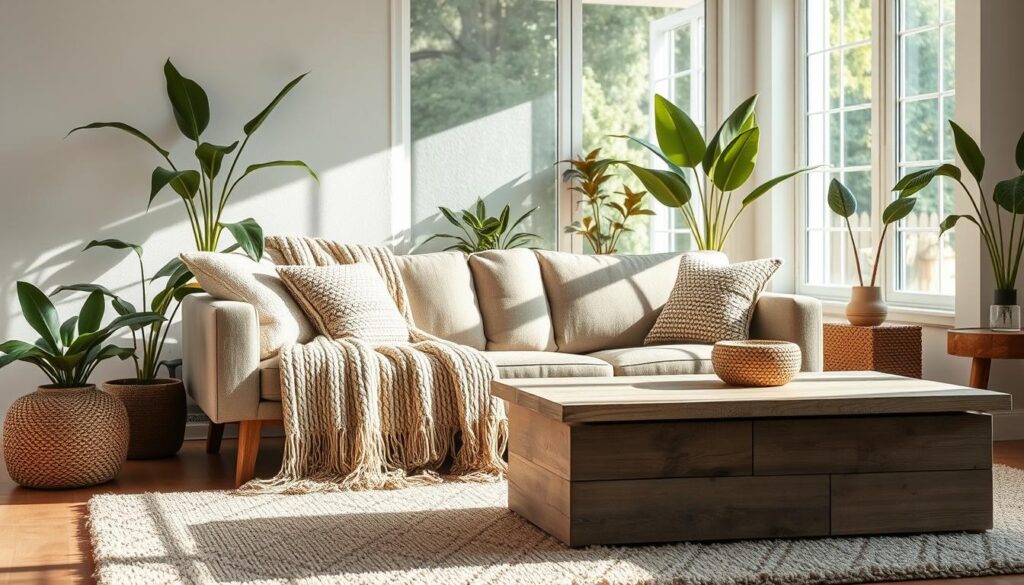
Whimsical Wallpapers and Vivid Rugs
Pair grasscloth wallpaper with a high-pile rug for instant depth. The Collective’s sourcing guide recommends:
- Geometric prints with shag rugs for modern spaces
- Flocked patterns atop jute for organic contrast
- Metallic vinyl wallcoverings with flatweave wool rugs
Tactile Fabrics and Finishes
Neurodiversity advocates favor these sensory-friendly fabrics:
- Brushed cotton (less overwhelming than synthetics)
- Washed linen with visible weave patterns
- Textured bouclé for gentle visual stimulation
| Rug Type | Best Texture Pairing | Maintenance |
|---|---|---|
| Shag | Smooth leather furniture | Weekly vacuuming |
| Loop pile | Rough plaster walls | Spot cleaning |
“Skim coating walls with plaster adds artisan texture—a perfect diy project for weekend warriors.”
For outdoors, combine weatherproof rattan with powder-coated metals. The contrast withstands elements while keeping the decor lively.
Conclusion: Your Happy Home Awaits
Transforming your space into a joyful retreat is easier than you think. Start small—a colorful accent wall or vibrant throw pillows can set the tone. Gradually layer in bold patterns and textures to build energy.
Keep your design fresh with these quick tips:
- Rotate art seasonally for visual novelty
- Use washable paints in high-traffic areas
- Visit local reuse centers for eco-friendly materials
Remember, your home should reflect what makes you smile. As designer Reena Sotropa says, “Spaces evolve—just like people.” Take it one weekend project at a time.
Ready to begin? Grab some swatches, turn up your favorite playlist, and let creativity lead the way. Your happiest space starts today.

